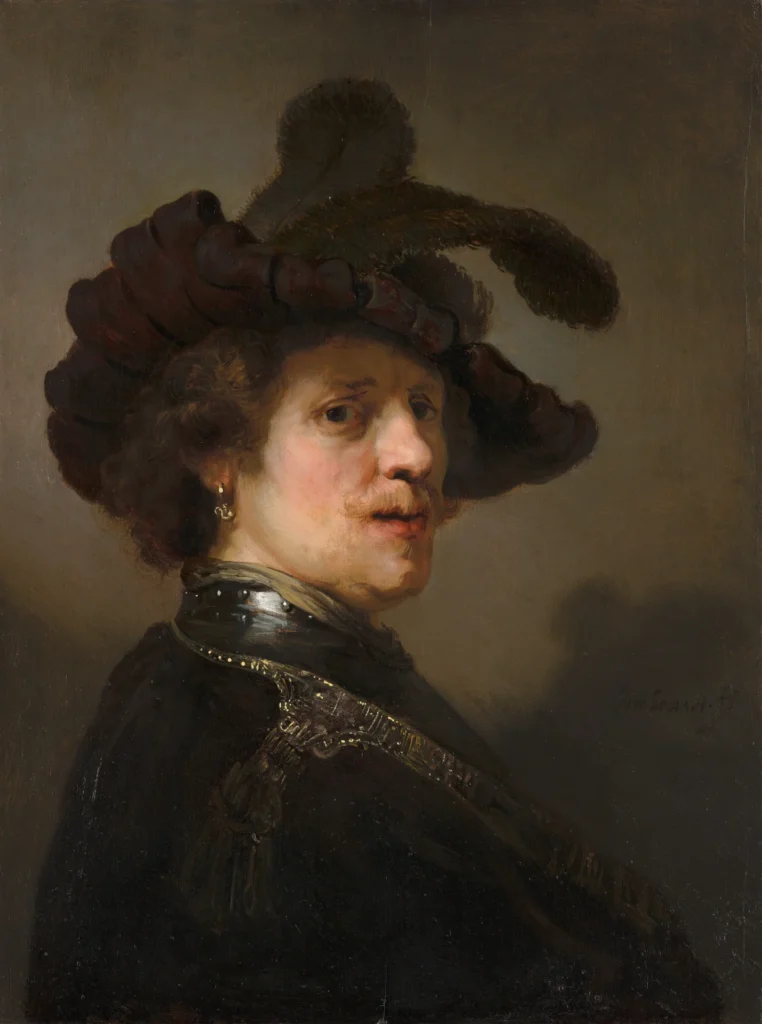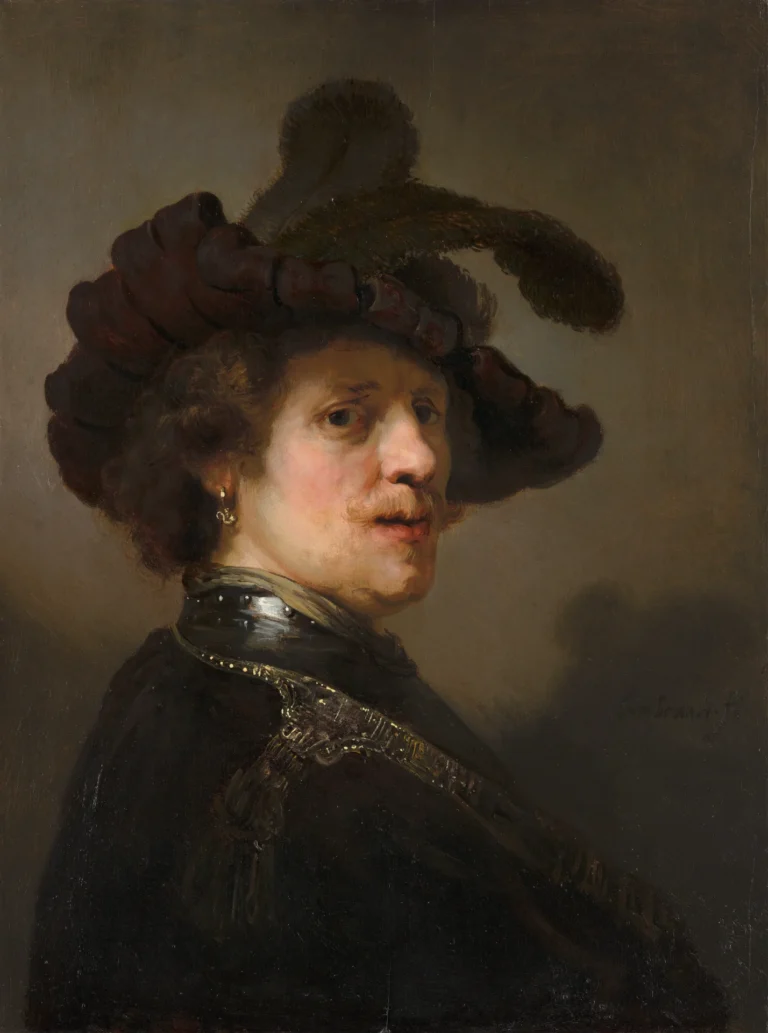Tronie of a Man with a Feathered Beret
Created between 1635 and 1640, Tronie of a Man with a Feathered Beret is an exquisite oil on panel painting attributed to Rembrandt van Rijn. It showcases the genre of tronie, focusing on a man's expressive face adorned with a striking feathered beret. The artwork stands out for its imaginative costume and Rembrandt's masterful use of light and shadow, illuminating the intricate details of the figure's features. This unconventional portrait emphasizes an artistic exploration of identity and expression rather than a specific individual, aligning with the characteristics of 17th-century Dutch art.
1635 - 1640
About the Artwork
The Tronie of a Man with a Feathered Beret represents not just a portrait, but an intriguing genre in Dutch painting known as tronie, characterized by its focus on facial expressions and costumes over identifiable subjects. Created in a period marked by artistic exploration and innovation, Rembrandt capitalized on this style to demonstrate his exceptional talent in chiaroscuro while uniting the man’s peculiar garb with emotive expression. The painting was acquired by Prince William V in 1768 and remains a precious part of the Royal Picture Gallery Mauritshuis collection, where it continues to inspire admiration for its imaginative representation and artistic depth.
Did You Know
The term ‘tronie’ comes from the Dutch word for ‘face’ and refers to distinctive, often exaggerated representations of faces intended for artistic exploration rather than as traditional portraits.
Rembrandt’s exploration of light and shadow in this work is not only a display of technical mastery but also signifies his innovative approach to capturing the complexity of human emotion.
Unlike typical seventeenth-century fashion, the eclectic costume choices in the painting reflect Rembrandt’s imaginative freedom, allowing him to delve deeper into the study of expression without the confines of reality.
Liked what you see? Add it to your collection.
Enjoyed reading? Share it.
... continued
The Tronie of a Man with a Feathered Beret is a painting attributed to the Dutch master Rembrandt van Rijn, created around 1635-1640.Medium and Dimensions
The painting is executed in oil on panel and measures 24 5/8 x 18 ½ inches (62.5 x 47 cm).Location and Provenance
The painting is part of the Royal Picture Gallery Mauritshuis in The Hague, Netherlands, and was acquired by Prince William V in 1768.Nature of the Work
This painting is an example of a "tronie," a Dutch term meaning "head" or "facial expression." Tronies were not intended to be identifiable portraits but rather artistic investigations of facial appearance, costumes, and lighting effects. They allowed artists to experiment freely with different expressions, costumes, and lighting without the need to represent a specific individual.Costume and Expression
The man in the painting wears a dark hat with a large feather and dark clothing. The costume is not indicative of seventeenth-century Dutch fashion but is instead a product of Rembrandt's imagination, showcasing his creative use of eclectic and fanciful elements.Authorship
Although the painting is attributed to Rembrandt, it is common for tronies to feature the artist's own features or those of his models, making the identity of the subject less relevant than the artistic study itself.
This work exemplifies Rembrandt's skill in using light and shadow to shape the contours of the face and his interest in exploring various facial expressions and costumes through the tronie format.










